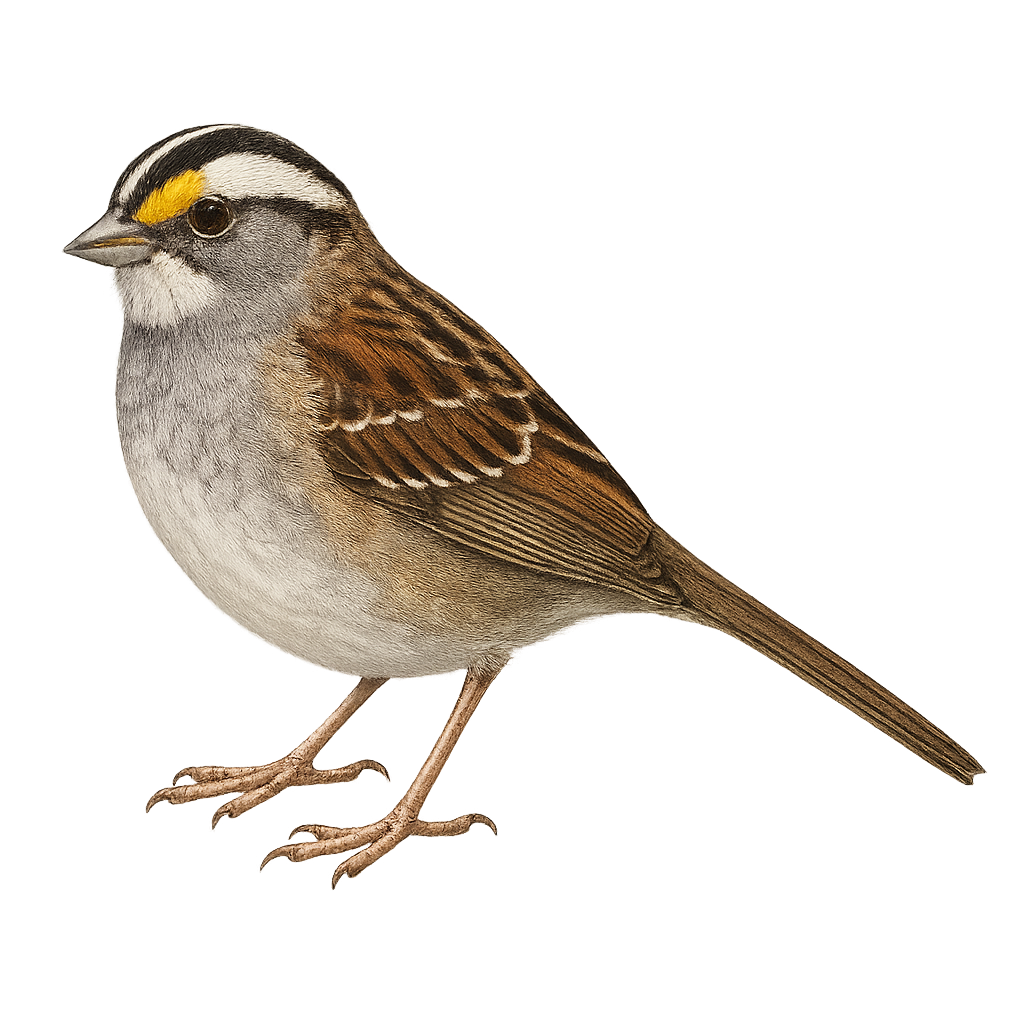Your wildlife photography guide.
Explore the white-throated sparrow in detail, study its behavior, prepare your shots.
Where to observe and photograph the white-throated sparrow in the wild
Learn where and when to spot the white-throated sparrow in the wild, how to identify the species based on distinctive features, and what natural environments it inhabits. The WildlifePhotographer app offers tailored photography tips that reflect the white-throated sparrow’s behavior, helping you capture better wildlife images. Explore the full species profile for key information including description, habitat, active periods, and approach techniques.
White-throated Sparrow
Scientific name: Zonotrichia albicollis

IUCN Status: Least Concern
Family: PASSERELLIDAE
Group: Birds
Sensitivity to human approach: Suspicious
Minimum approach distance: 5 m
Courtship display: May to June
Incubation: 11-14 jours
Hatchings: May to July
Habitat:
Mixed forests, dense undergrowth, forest edges
Activity period :
Primarily active during the day, with peak activity in the morning and late afternoon.
Identification and description:
The White-throated Sparrow is a medium-sized songbird, easily identified by its distinctive white throat contrasting with its brown streaked plumage. It also features a yellow patch above each eye. Found mainly in North America, it inhabits mixed forests and dense undergrowth. Its melodious song is often heard in spring and summer. This sparrow is a partial migrant, moving to the southern United States in winter. It primarily feeds on seeds, insects, and berries. Pairs nest on or near the ground, hiding their nests under bushes or tall grasses. The White-throated Sparrow is a sociable bird, often seen in small groups, especially outside the breeding season.
Recommended lens:
400 mm – adjust based on distance, desired framing (portrait or habitat), and approach conditions.
Photography tips:
To photograph the White-throated Sparrow, focus on forest edges and undergrowth where it is often active. Use a 400mm or longer telephoto lens to capture detailed images without disturbing the bird. Be patient and discreet, as although suspicious, this bird may approach if you remain still. Take advantage of early morning or late afternoon hours to benefit from soft, natural light.
The WildlifePhotographer App is coming soon!
Be the first to explore the best nature spots, track rutting seasons, log your observations, and observe more wildlife.
Already 1 431 wildlife lovers subscribed worldwide

